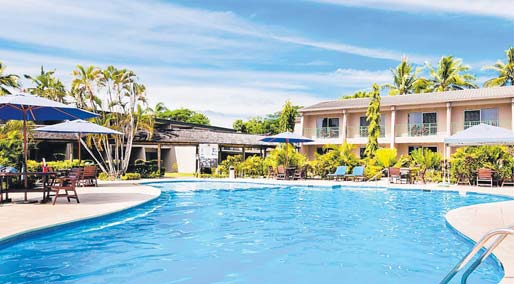Yes we do need more hotel rooms to cater for the growing tourism industry!
We’ve said this before and now reiterate what Cove Management Ltd director Mark Hinton is saying.
It makes sense.
We need more rooms, especially more beds, to cater for the expected rise in the number of tourists we could be expecting by the end of this year.
We remember Tourism Minister Viliame Gavoka had highlighted earlier that there was a need to build 4000 hotel rooms to cater for the demands.
While speaking on the construction of a new 101-room hotel named as ‘Days Inn by Wyndham Nadi, Martintar’ Mr Hinton confirmed the company Cove Management had signed to manage the hotel on behalf of the project owners — Public Service Association Investment Company Pte Ltd.
The project is expected to be completed in mid-2026.
While Days Inn will finish with 101 rooms, Mr Hinton believes there is still a need for more development in the hotel sector.
“I believe the airline sector can cater for more passengers, so we do need more rooms,” he noted.
“We have the Wyndham Garden, just down the road opening in September this year which has 90 hotel rooms.”
We once again highlight the importance of ensuring we have the capability to cater for the expected rise in numbers.
They go hand in hand.
That means development, for more rooms.
The roll-on impact is going to be positive anyway.
More rooms and beds mean emphasis on development.
It means emphasis on investor confidence, and that means employment in various sectors connected to tourism.
In fact the revelation that Fiji is on track to welcome a million visitors to our shores this year is great news.
Mr Gavoka made this known at the Fiji Tourism Exchange (FTE) last month.
He spoke about taking Fiji’s “authentic beauty culture and experiences to the world from cities like Sydney and Beijing to Times Square and everywhere in between”.
We received a record 929,740 visitors, with almost 80 per cent visiting for a holiday at the last count.
Key source markets for Fiji have remained Australia and New Zealand with significant growth coming from North America.
The visitor economy contributed more than $3billion in revenue during the year, highlighting the significant economic impact of tourism on Fiji.
But to hit a million visitors will mean us considering the number of rooms we have available for the different kinds of tourists, from the high-end visitors to backpackers.
That’s for starters!
Then we will need to break that down to rooms by the day and months, taking into account peak periods.
That will mean participation from connected arms of the industry, including our national airline and transport providers on the ground.
If we meet our target, it will be a significant milestone.
We reflect on what this means to the economy, and what it means to showcasing our unique culture and beauty to the world.
Our success will also depend on how we look after our visitors, to compel them to spread the word about our home, and encourage them to return!



